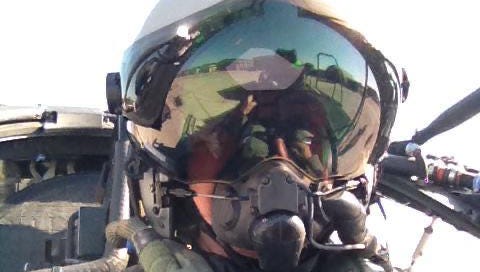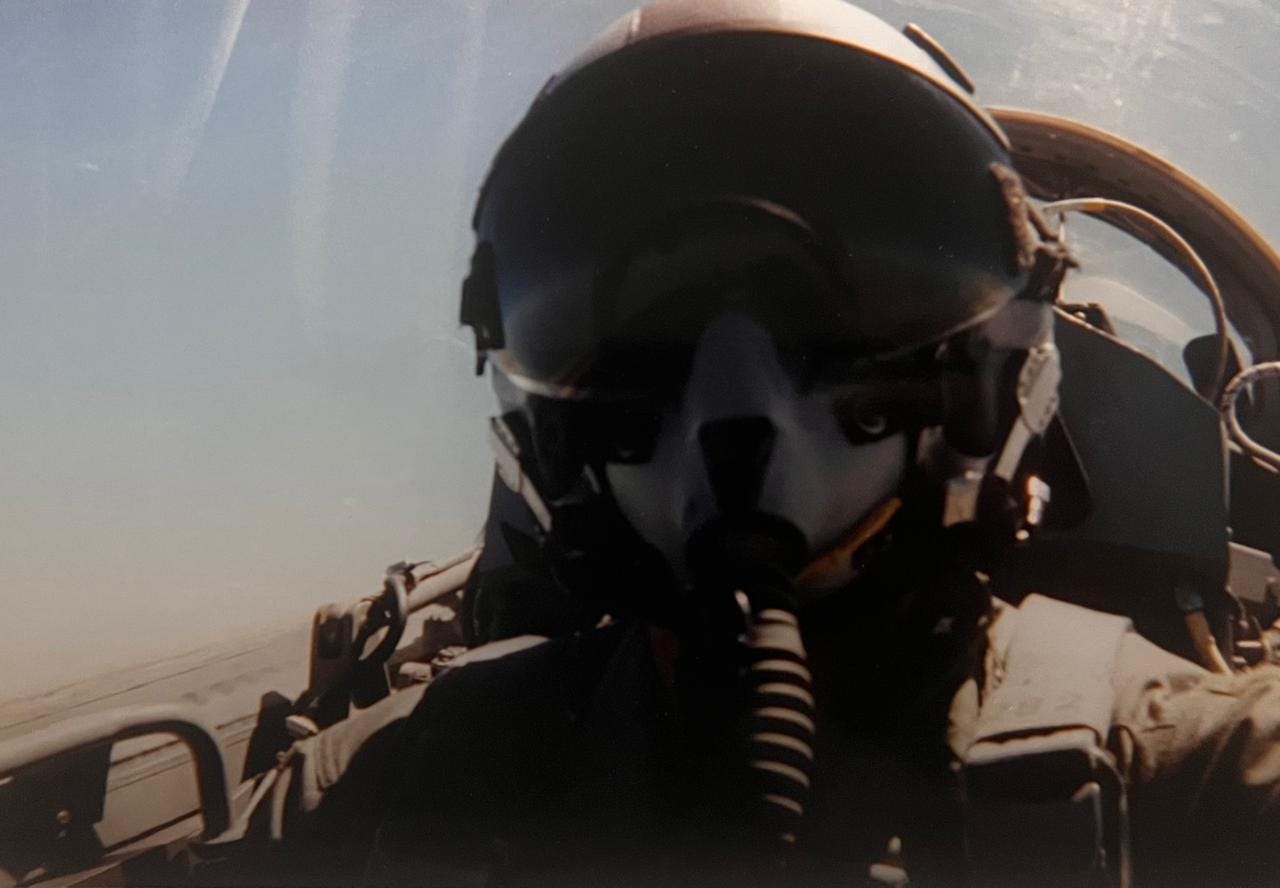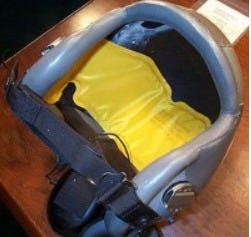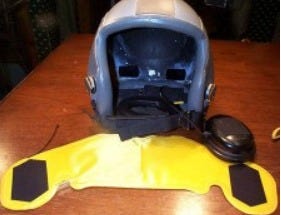Over the years, I’ve often been asked how I feel - what happens in my body - when I fly supersonic, soar at high altitude, or pull high – G turns, climbing and descending in a jet fighter.
It’s clear from these questions that people are fascinated by the world of fighter pilots. And it’s also understood that profession is not just physically demanding but mentally exhausting as well.
At the beginning of this century I had the luxury to fly the F-104, an aircraft from a different era, later transitioning to the F-16 and ultimately the Typhoon. The common denominator to conduct the mission effectively was not only the skills to survive the demanding environment - high speeds, extreme G-forces, and intense combat scenarios – but the use of advanced gear which enhanced the pilot’s abilities.
When I started pilot training in 1993 on the SF-260, I was assigned a bright white and orange helmet with a dark visor and a microphone. My Academy Classmates (“Paricorsi”) and I were sharing a batch of helmets.
The fit wasn’t snug, design wasn’t Top Gun Standard, but it was enough to protect my head and face in case of some canopy damage and to allow communication with a bit of noise reduction.
When I started flying “Tweets” (Cessna T-37) in the USA I was assigned my own helmet. The fit was much better, but the purpose was the same as above.
This helmet was now equipped with an oxygen mask. Pressurization in Jet Fighters is not like commercial airliners, which use constant cabin pressurization for comfort, while jet fighters rely on partial pressurization and oxygen systems to handle extreme altitudes.
Ergo, the use of an oxygen mask to ensure the pilot gets enough oxygen in low pressure environments.
Finally, it was time for the T-38 “Talon”. The T-38 was very different aircraft in terms of performance compared to the Tweet. It was so close to a Jet Fighter! And as such pilots had to use a G-Suit (or better, G-pants).
So, I not only had a well fitted helmet with a mask, but also well fitted G-pants (more on that in another article).
A secondary benefit of having a closed mask with a microphone was clearer communications without less background noise.
After pilot training, I was assigned to the F-104 and the helmet I was using in the States was compatible with the Italian Starfighter. The Italian Air Force assigned me also an Italian version of the flying helmet and oxygen mask, which was slightly heavier than its American counterpart. Pilots had the option to use either. The Italian version accommodated both a dark and a clear visor for night flying, while the Life Support operator had to swap manually the two visors on the American version.
When I transitioned to the F-16, I was assigned and fitted with another helmet, very similar to the previous one, but with some innovations. It was equipped with the Combat Edge system which consisted of an inflatable bladder at the back and sides of the helmet. When the pilot was pulling heavy G's, the bladder inflated and forced the mask tighter against the face, thereby keeping a good oxygen seal.
This was a huge performance enhancer because the F-16 introduced pilots to a high-G environment.
But there was also a flight safety improvement. Helmets were equipped with a safety device that would automatically cut the oxygen mask hose in the event of a sea ejection. This system was crucial for preventing a dangerous situation where a pilot, upon hitting the water, could be pulled under due to the attached hose, leading to drowning.
The mechanism worked by detecting water immersion and severing the hose instantly, allowing the pilot to separate from the aircraft’s oxygen system and breathe freely. This feature was particularly important for overwater missions, where rapid egress and survival in the sea depended on minimizing entanglement risks.
The Typhoon helmet has a very similar design to the Italian Airforce helmet, featuring two visors, but the mask model is different from both the American and Italian helmets.
Regardless, it does the job with helmet essentials:
- Oxygen to the pilot when needed.
- Clear Communications.
Not a long ago it was decided to equip the helmets with more mission-oriented capabilities. So called Helmet Mounted Sight was added through lenses to fighter pilot helmets allowing them to lock to air and surface targets just simply by looking at them.
I was lucky enough to test and implement for a couple of years the use of the Typhoon Helmet.
Modern fighter pilot helmets, like the Joint Helmet-Mounted Cueing System (JHMCS) or the F-35’s Gen III Helmet, are advanced battle tools, allowing pilots not only to lock onto targets simply by looking at them, but also providing a 360-degree augmented reality (AR) view, letting pilots “see through” the aircraft.
Application Beyond the Cockpit
There is no doubt that technological advancements in military aviation have influenced and inspired various industries with completely different scopes.
Think about motorsports, particularly Formula 1. Drivers benefit from lightweight, high-strength helmets equipped with integrated communication systems and heads-up displays, improving situational awareness (SA) and reaction times.
F1 drivers, like fighter pilots are high performers operating in extreme conditions. The helmets made from carbon fiber composites for strength and lightness protect them from the environment and lightness helps the pilots to reduce fatigue in high-G environment too.
Communication devices are integrated in the helmets to keep the drivers connected with their teams and their wingmen.
Applications of what we learned in aviation are constantly implemented in high- performance sports. In Sport Science it’s common practice the use of training masks to simulate high-altitude conditions, which improve endurance and lung capacity.
Aerospace Physiology studies about fighter pilot oxygen systems have inspired innovations in respiratory training devices that help athletes optimize oxygen intake and recovery.
Augmented Reality (AR) technology, which was first pioneered in modern fighter pilot helmets is now part of daily surgeons’ work. This medical field benefits of new technology providing real-time patient data, improving precision and efficiency in complex procedures.
I am a keen sustainer of the crossover between different industries, and I really like when aviation technology has a broader impact on other line of businesses.
Formula 1, Elite Athletes, Surgeons…
All benefit from the lessons learned in the cockpit shaping technology with the purpose of enhancing human performance, safety and efficiency.











Great article!